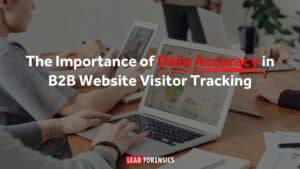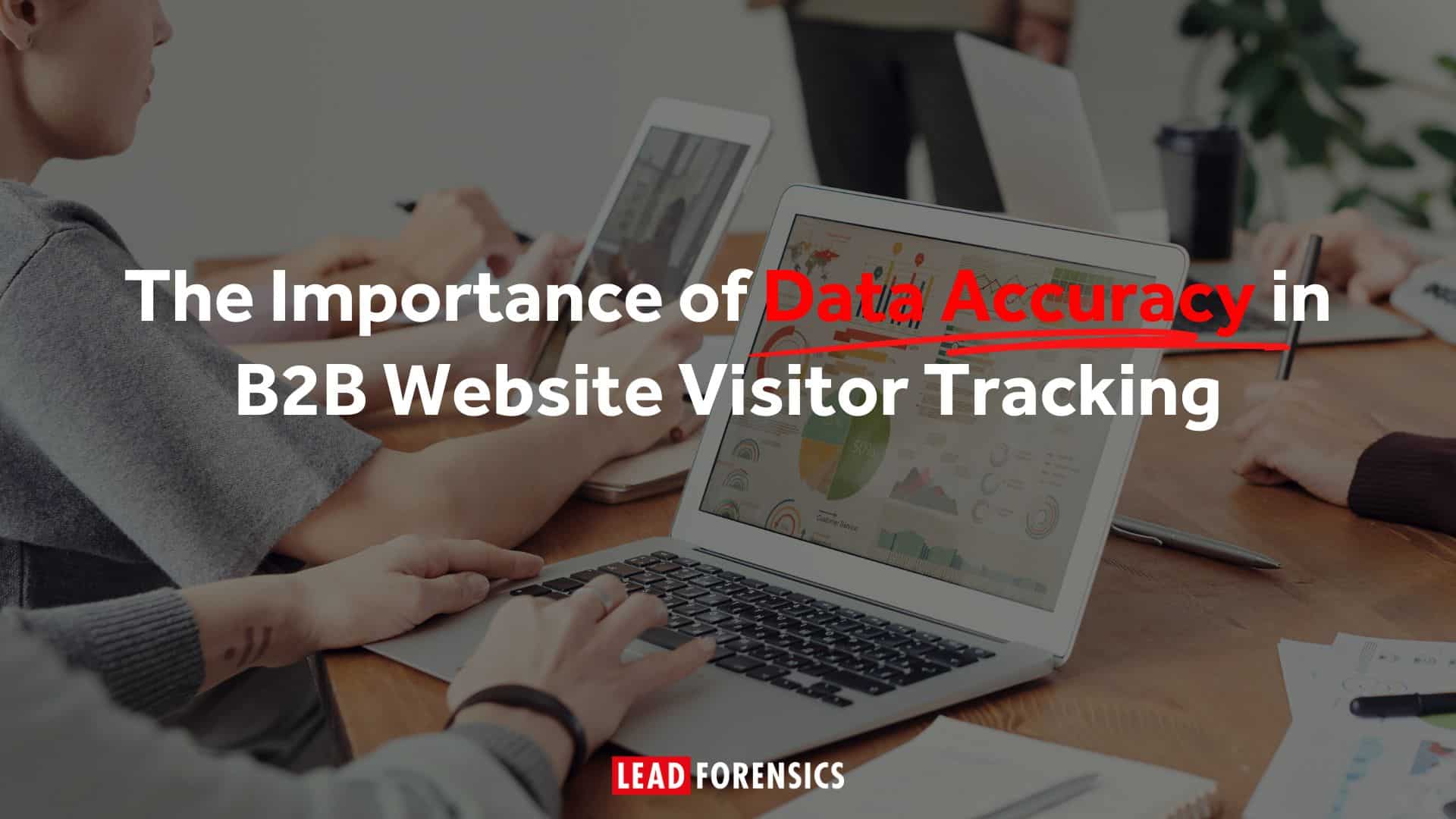Digital Marketing Glossary
A/B testing: Testing two versions of the same webpage/page copy/call-to-action (version A and version B) changing one element (such as color, text or positioning), to determine the most successful in achieving desired goals. The more successful version is kept, and the unsuccessful version deleted or archived.
Benchmark: A measure of comparison, where businesses put their results again industry best practice results.
Call-to-action (CTA): Encouraging the visitor to perform an action using a visually pleasing, clear instruction. This can be for conversion, content downloads, webinar sign-up and more! CTAs should stand out, be exciting and elicit a feeling of urgency in the potential buyer.
Campaign: A marketing venture (through email, PPC, content and more) aiming to increase brand awareness and encourage conversion. Campaigns also increase website traffic as people search for further information.
Competitive intelligence: Gathering and analyzing information about competitors to make strategic decisions and propel your business advantage in the marketplace. Some web analytics tools, like Lead Forensics, can alert you when a competitor visits your website, so you can track their behaviors and understand their motives.
Content download: A popular goal for business websites (along with conversion), encouraging visitors to download content, often in exchange for contact details.
Conversion: The act of a website visitor performing an action that has value to your business, such as tracked phone calls, downloads or completed contact forms.
Conversion rate optimization: The process of making improvements to your website in order to get more conversions.
E-commerce: The trading of goods and services via the internet, often in the form of purchasing through a business website.
KPI / Key performance indicator: A value used to measure success based on performance. When investing in web analytics tools, it’s important to ensure KPIs are set for your team to use the tool for maximum effect and to gain ROI.
Landing page: A webpage specifically designed to start the visitor journey when responding to a marketing campaign (such as PPC or email). This page aims to convert visitors instantly, though it can also spark brand interest and a longer website journey.
Lead: An individual/business who is engaged enough with your brand to be considered a possible client. Leads are often generated through initial marketing conversion or early outbound sales success.
Lead generation: The strategy followed to generate leads from your digital marketing activities. It could be inbound marketing, outbound marketing, warm calling or other marketing and sales methods.
Multi-channel: Referring specifically to the use of multiple marketing channels. For example, an individual receives an email from a recent campaign. Then uses that email to access your website, causing them to convert – this is a multi-channel approach to conversion.
Platform: Systems or software specifically developed to benefit marketers. For example, Google AdWords offers a platform enabling PPC on Google based SERPs.
PURL: Personalized URL, sent to a specific individual, so when activated it can be tracked back to them. These URLs are often used in email campaigns, allowing advanced web analytics tools to identify website visitors to the individual.
ROI/ Return on investment: When money is invested in a new tool, solution or campaign, this is the ultimate measure of its success – has the investment been returned in business revenue.
SAAS: Stands for “software as a service”. SAAS tools offer businesses software that provides a fully-fledged solution as part of a subscription package, usually with software hosted in the cloud.
Web Analytics Terms
Analytics: The process of gathering and analyzing data to discover trends, patterns and links.
App analytics: Analytics specific to your business application for mobile/tablet, using data generated from interactions with this app.
Audience identification analytics: Analytics fueled by data specifically pertaining to information about your audience, such as location, industry and business.
Basic analysis: The surface level numbers needed to get an overarching picture of website performance, such as “overall traffic” and “popular pages”.
Bounce rate: The number of visitors exiting the site after visiting just one page and performing no tracked actions on the web page.
Click-through rate (CTR): The number of times a link is clicked by a visitor. This is usually applied to paid and email campaigns, measuring how many recipients clicked onto the website/landing page.
Dashboard: The presentation of easy-to-read data, offering a performance overview within an analytics or management tool. Some tools offer customized dashboards, so users can access their most important results first.
Data: Relevant variables that fuel understanding. Often (but not always) in numerical form, data populates reports and is used to conduct analysis and inform decisions.
Data visualization: A visual communication of data, making it easier to read and understand, such as a graph, chart or table.
Direct traffic: Traffic that visited your website with no referrer data. This could be visitors who found your website without using any specific channels; they entered your URL directly into their browser or used a bookmark/favorite button to access your site.
E-mail traffic: Website traffic brought to the site via a link found in an email, usually from a specific marketing campaign.
Entry page: The first page a visitor accesses when landing on the website.
Event: Any action taken by a website user is classed as an “event”. For example, a hyperlink is clicked or the input in a search field changes.
Exit page: The final page a visitor accesses before leaving your website or closing their browser.
First party cookie: Cookies associated with the domain the visitor is currently viewing.
Form fills: When a website visitor fills in a form featured on your site, usually a contact form, or form to download gated content. This often leads to website visitor conversion.
Geo-location: Using an IP address to identify the location of the visitor. This feature is offered by a selection of advanced web analytics tools, such as Lead Forensics.
Goal: What you want to achieve with your business website, for example visitor conversions or content downloads. You need these goals clearly outlined for maximum web analytics benefit.
Heatmap: A visual representation of user clicks across a webpage, the more clicks on a specific area (usually button or images), the more intense the color. This helps businesses easily understand how users interact with their website.
Hit: A recognition of server access (when a visitor lands on/loads your website).
Hit counter: A basic counter of how many hits your website receives. Many web analytics tools include a hit counter as part of their data analysis.
Immediate exit pages: This metric measures the pages from which visitors exit without having moved to any other page or section. For businesses measuring bounce rates, this metric offers insight into which pages audiences find underwhelming.
Log-based data collection: This is the process of gathering and analyzing real-time data from servers and devices. The process is often used to identify security breaches but also offered the foundations for early web analytics tools.
Metrics: Numerically fueled values offering objective and reliable results for analysis. Most website analysis remains based on metrics due to their definitive nature, ensuring decisions are influenced by high-quality data.
New visitor: A visitor who hasn’t accessed your website before. More advanced web analytics tools can distinguish between returning visitors and new visitors, helping businesses better understand their website success.
Organic traffic: The numbers of visitors landing on a website naturally through search engine results and not through any paid source or referrals.
Pageviews: Either the number of pages accessed by one specific visitor, or the number of times a specific page has been viewed, for example your homepage or contact us page.
Pageviews per visit: The number of pages accessed by a single visitor on one specific visit. Understanding your average pageviews per visit allows businesses to know how often people engage with their content.
Real-time: Term referring to gaining results in line with live website visits. The most advanced analytics tools can provide results in real-time, helping businesses understand campaign impact and maximizing conversions.
Referral traffic: Traffic referred to a website from another website. Some advanced tools can decipher between referrals, helping businesses understand where their web traffic comes from.
Returning visitor: Visitors who have accessed your website before and come back for further information.
Session: A single visitor’s browsing of a website during a given time period. One session can include multiple page views and re-visits, ending after 30 minutes of inactivity.
Single page visits: Sessions where visitors only access a single page. This can be both a positive and negative reading, depending on the page in question. (See more on Immediate exit pages).
Source: The source details how a website visitor accessed the site in question. Sources can include social, referral, direct, organic and more.
Third-party cookie: A cookie associated with a domain, differing from the domain on which it sits. These are often cookies benefiting website additions/specific tools (such as web analytics software).
Tracking pixels: A small 1 x 1 pixel hidden on a web page or email that, when activated, allows the host to gather and analyze user data.
Traffic: The term coined to reference internet users visiting a website – or overall visitors.
Unique visits: The count of visitors who enter a site multiple times during a given period (usually 30 mins), but is counted only once as a single visit, by a web analytics tool.
Visit duration: The amount of time a visitor spends on a specific website, including all page visits. This is recorded from the moment they arrive on the server, to the moment they click onto another server (a new domain), or they close their window.
Visitor: Someone accessing a website is a website visitor.
Visitor behavior: How a visitor behaves whilst on a website, including information surrounding the pages they view, the buttons/images they interact with and the actions they end up taking (converting or exiting).
Visitor identification: The ability to identify anonymous website visitors, offered by advanced web analytics tools such as Lead Forensics. This is usually done through reverse IP tracking, cookies and privately-owned databases of business information.
Visitor recording: An advanced web analytics feature recording specific website visits, allowing users to see how visitors navigate and interact with a site.
Visits: A visit is the journey taken by a specific individual whilst on a website. This includes how they arrived on the site, the pages they viewed and how they left.
Website Terms
Anchor text: The visible text on a webpage that a user can click on to visit another website.
Broken link: A link no longer sending visitors to the appropriate page. These links can heavily affect SEO success and cause a decrease in conversions.
Browser: The application used to access the internet. Most web analytics tools can identify the browsers used by visitors.
Cookies: A text-based file placed on a visitor’s device whilst on your website. This boosts advanced website analytics and allows businesses to see returning visitors.
Dead end page: Webpages with no links, forcing the user to press the “back” button to continue their site navigation. These pages can often cause visitors to leave and are discouraged.
HTML: Abbreviation of “hypertext mark-up language”, this is the data format used to display webpages.
Link: A string of HTML that when activated, takes the user to another webpage. Links are often embedded in webpages to increase navigation ease and prolong visitor engagement.
Load time: The time taken for a webpage to load. Modern audiences expect this to be quick, and conversion success can decrease by 7% for every second load time is increased.
JavaScript: A programming language to fuel many web analytics tools, allowing users to gather insightful visitor information.
Navigation: The term used to describe movement across a website, from page to page. The easier website navigation is, the better engagement and conversion results.
Plug-in: A small piece of software that can be bolted on to a website or tool to access to new features or improve overall performance.
Redirect: When a URL points to a new webpage instead of the page the URL originally pointed to. Pages are often redirected to another during site migrations or when multiple pieces of content are amalgamated into one article.
Server/Sever errors: Servers offer content to the world wide web and can be in both software and hardware form. Every website is hosted on a server, allowing it to share its message with the world. A server error occurs when a webpage is unable to be displayed to the public due to a technical flaw within the page’s content. Server errors also stop search engines properly finding your website, hindering SEO.
Stickiness: A measure of a website’s success in retaining visitor engagement, often accumulated with the numbers of pages visited per session and site duration. The longer a website encourages engagement, the more “sticky” it’s deemed to be. This stickiness is often achieved through unique website elements and insightful content/assets.
Tags: Tags are small pieces of code that allow specific metrics on webpages to be measured. These tags are inserted into a page’s source code and allow the analytics tool in question to log specific server activity and connections.
Uptime: A measurement of how long a site is useable and viewable i.e. how long the site is “up”.
URL: “Uniform resource locator”. A character string of code containing the location of a specific resource and how it can be accessed.
User experience (UX): The term used to describe the overall experience a website offers the user. A website with good UX offers users a beneficial and positive experience, encouraging them to convert or return.
User navigation (UN): The term used to describe the way users navigate a website. A website with good UN offers users easy access to the pages they need, across all devices. Good UN for desktop, doesn’t always translate to mobile/tablet.
Website: A set of webpages housed under a single domain. These pages all relate to each other and create a public source of content available on the world wide web.
Search Engine Optimization Terms
Alexa rank: A rank of how successful your website is relative to all other website over the past three months. This is owned by Amazon and updated daily, however it isn’t very accurate.
Backlink: An external link leading to your website or your webpage. The SEO success of this link is driven by the quality of the external website and their relevance to the linked site.
Crawler: A program that reads through website pages to assess their appropriateness for specific search engine entries. A crawler error occurs when the program is unable to read a page.
Duplicate content: Content that is repeated across the site. This could be due to blog posts being posted on multiple URLs or the same introduction used on hundreds of articles. Too many instances of duplicate content may be detrimental to a website’s performance in search results.
Keyword: An SEO term that describes a word (or set of words) prospects are typing when they search for information online.
Long tail keywords: These are keywords containing 4 words or more. These are popular, as keywords are very competitive with many businesses using single words like “marketing”- long-tail keywords help businesses achieve higher rankings and offer better quality visitors with more specific searches.
Meta description: The short description presented under the main headline link on search engine results. Meta-descriptions entice searchers to interact with business websites.
Reachability: The measure of how easily visitors and search engine crawlers can access specific information on a website. A site with good reachability means it’s easy for users to find the precise information they need.
Search Engine: A web page used to find resources that relate to specific words or phrases. Advanced crawlers search through pages and show the searcher those they deem most relevant to their needs based on keywords searched.
SEO/Search engine optimization: The process of optimizing a website for search engines. This can be through managing off-site signals, improving on-site content or resolving technical issues with the site. Better performing SEO means a page appears higher on the SERP, grabbing the attention of more people, driving more website traffic to conversion.
SERP: “Search engine results page”; after a search is conducted, this is the page showing the searcher the results deemed best fit to their needs.
Site audit: The process of reviewing a website, evaluating and accessing its performance across a variety of criteria including SEO, content for conversion, competitor and security.
Advertising Terms
Banner: Banners are clickable, rectangular adverts that link users to a specific webpage on your website. Banners can be static or animated.
Impression: Easy to confuse with other metrics, an impression refers to every instance a specific advert (or similar) appears on someone’s screen. For example, if a PPC advert has 100 impressions and 10 hits/clicks, you have a 10% click-through rate.
PPC/Pay-per-click: Search engine advertising, where people bid on different keywords in order to place an advert in highly ranked spots on SERPs. This advertising charges per click each advert receives (hence its name), so it can get very expensive if poorly executed.
Social analysis: The act of measuring and analyzing social media activity and success, looking into how this feeds into website activity.
Social traffic: Traffic stemming from social media campaigns and social link shares.
More Digital Marketing Learning Resources
Take a look at our webinars, podcasts and blog for more help navigating the world of B2B marketing.









